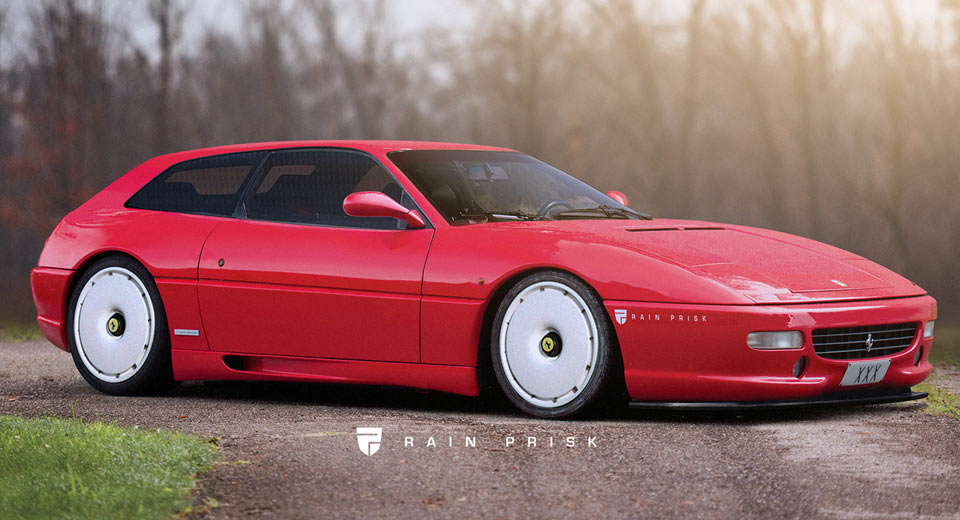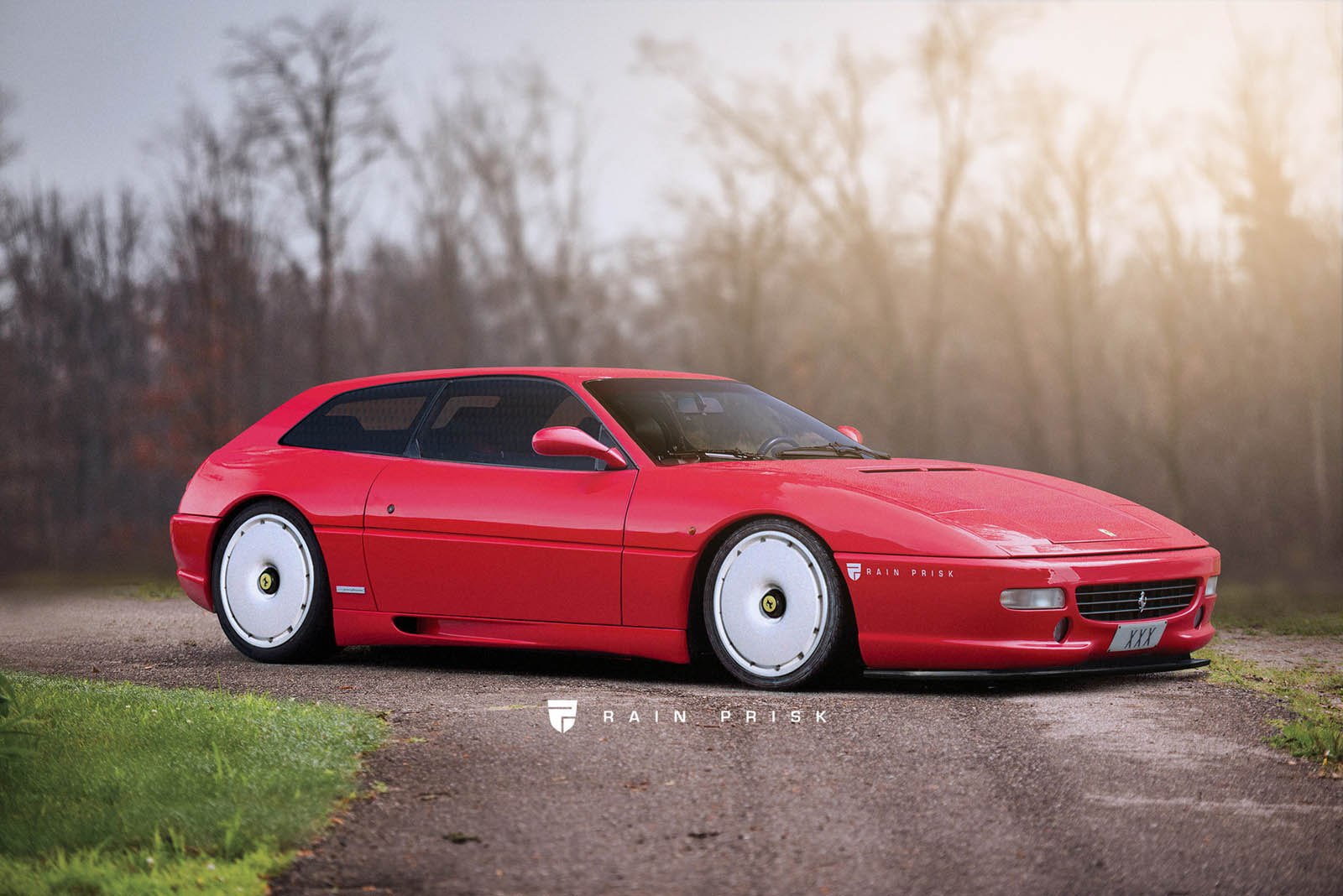In an industry that typically favors evolution over revolution, the Ferrari FF represented a clean break with its predecessors when it hit the scene in 2011.
Not only was it the first Ferrari to employ four-wheel drive, but it also employed a completely different bodystyle, with a shooting-brake roofline instead of the elongated coupe profile of the 612 Scaglietti that came before.
But what if the Prancing Horse marque had arrived at that conclusion earlier? What if it had applied that format to the 456 GT instead, was back in the early 1990s? That’s what Rain Prisk hypothesizes in this latest rendering: a 456 with a longer roof and a tailgate.
Not familiar with the 456? That’s what came before the 612, which in turn gave way to the FF and then to the GTC4 Lusso we have today. It was several inches shorter from bow to stern than the somewhat ungainly Scaglietti that followed, but packed a 5.5-liter V12 under its hood and four seats. A revised 456 M arrived in 1998, extending the model’s lifespan through 2003, and bringing with it the option of a four-speed automatic transmission.
The styling was a welcome step forward over the 412 it replaced, but was decidedly more toned down than the models that followed – looking best in darker shades than the customary bright red employed here.
Believe it or not, there were a handful of 456-based wagons actually made – by Pininfarina for the Sultan of Brunei, called the Venice. But they featured four doors in addition to the tailgate and a rather different roof design. Would customers have been any more receptive to an exotic
twelve-cylinder wagon (with or without all-wheel drive) in the 1990s
than they have been to the FF and GTC4 Lusso? Who knows, but it sure is
interesting to think about.
Oh, and those wheels? Those appear to be a nod to another all-wheel-drive supercar: the Porsche 959, which – in its original concept form – used a similar design before the production version adopted a more conventional five-spoke design. They also remind us a little of the alloys on the Jaguar XJ220, which was also originally envisioned to employ all-wheel drive.




